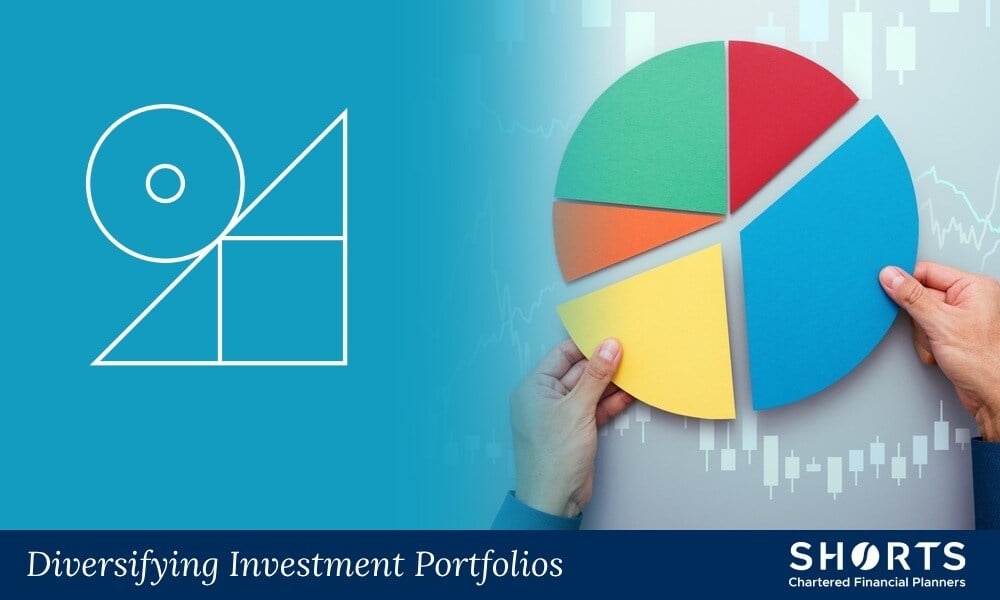
Whether the career finish line is in sight or you are just starting to earn a substantial income, retirement planning should always be on the agenda.
The global economy is constantly shifting, making investing for retirement both risky and rewarding. Different regions and asset classes have always had highs and lows, influenced by a wide range of national and global developments.
A concentrated portfolio that focuses on a limited number of assets or sectors carries a lot of risk. The US tech giants, for instance, have seen incredible growth in recent years, which has seen some investors do very well; but investors concentrating on this area may be over-exposing themselves, should there be a downturn in the future.
It is practically impossible to pick the right investment year-in year-out, which is why diverse investment portfolios are recommended, particularly for retirement planning.
What is a diversified investment portfolio?
When it comes to investments, diversification means spreading your investments across a range of different types of assets or investment vehicles rather than investing everything in one place.
A diversified investment portfolio shields your overall wealth if one investment underperforms or fails. Stock market volatility, declining interest rates or real-estate price drops can all drastically affect investments in these areas. A mix of investments such as stocks, bonds, property, commodities, and cash provides a well-balanced investment plan.
The benefits
- A diverse investment portfolio may significantly reduce risk compared to sizeable investments in a single asset class.
- You can invest in a mixture of assets typically regarded as lower risk, medium risk and higher risk, to construct a more favourable outcome overall
- A mix of assets can help you protect retirement savings from sudden market shifts, smoothing out fluctuations.
Things to consider
A diversified investment portfolio is widely considered a smart strategy for investors and retirement savers; however, there is no perfect investment strategy that is free from downsides.
- Diversified portfolios aim to reduce risk, but the impact of high-performing assets may be diluted. In other words, if one asset performs exceptionally well, this performance may be offset by the underperformance of another.
- There is a greater administrative burden associated with managing a diversified investment portfolio, and it can be difficult to achieve optimal asset allocation. That is why we strongly recommend working with a qualified financial advisor.
- There may be greater costs and fees for portfolio management.
- Over-diversification may occur if a portfolio contains so many investments that it starts to resemble the market average, offering little potential for outperforming standard benchmarks.
What might a diversified investment portfolio include?
The following should be taken as a quick reference only. If you have a question or would like to learn more about one of the following asset types (or classes), please contact one of our qualified financial advisors.
Equities (stocks and shares)
- Individual stocks allow individuals to invest in the shares of publicly traded companies.
- Investment funds, such as ETFs (exchange-traded funds) and mutual funds, typically pool the money from multiple people to invest in a variety of different assets.
Fixed-income investments (bonds)
- Government bonds, or Gilts, are debt securities issued by governments to provide a fixed income.
- Corporate bonds are issued by companies to raise capital. These are like government bonds but typically come with greater risk alongside higher potential returns.
- Inflation-linked bonds are bonds for which payments are inflation-adjusted to protect against rising prices.
Cash (or equivalents)
- Cash can be invested in various types of savings accounts, including cash ISAs.
- A money market fund is an investment solution that invests in short-term cash debt (such as from governments or banks) rather than bonds or shares.
Property
- Buying physical property, such as residential or commercial buildings, can provide capital appreciation as well as rental income.
- Real estate investment trusts (REIT) own and manage income-producing properties on behalf of shareholders, allowing investors to invest in real estate without buying physical properties.
Commodities
- Precious metals (such as Gold, Silver and Platinum) can provide a hedge against inflation and economic uncertainty. Base metals, such as zinc, copper and aluminium, may also be invested in.
- Investing in energy commodities (like oil and natural gas) can offer returns linked to the global demand for energy.
The value of an investment and the income from it could go down as well as up. The return at the end of the investment period is not guaranteed, and you may get back less than you originally invested.
This article is for informational purposes only and does not constitute financial advice.
.jpg)
Brian Gooch
I work extensively in the corporate owner managed business sector, covering transactional taxes, property taxes including Stamp Duty Land Tax and VAT, and all areas of business tax planning. I have considerable experience in maximising tax efficiency by reviewing business structures and planning corporate reorganisations.
View my articlesTags: Wealth Management
